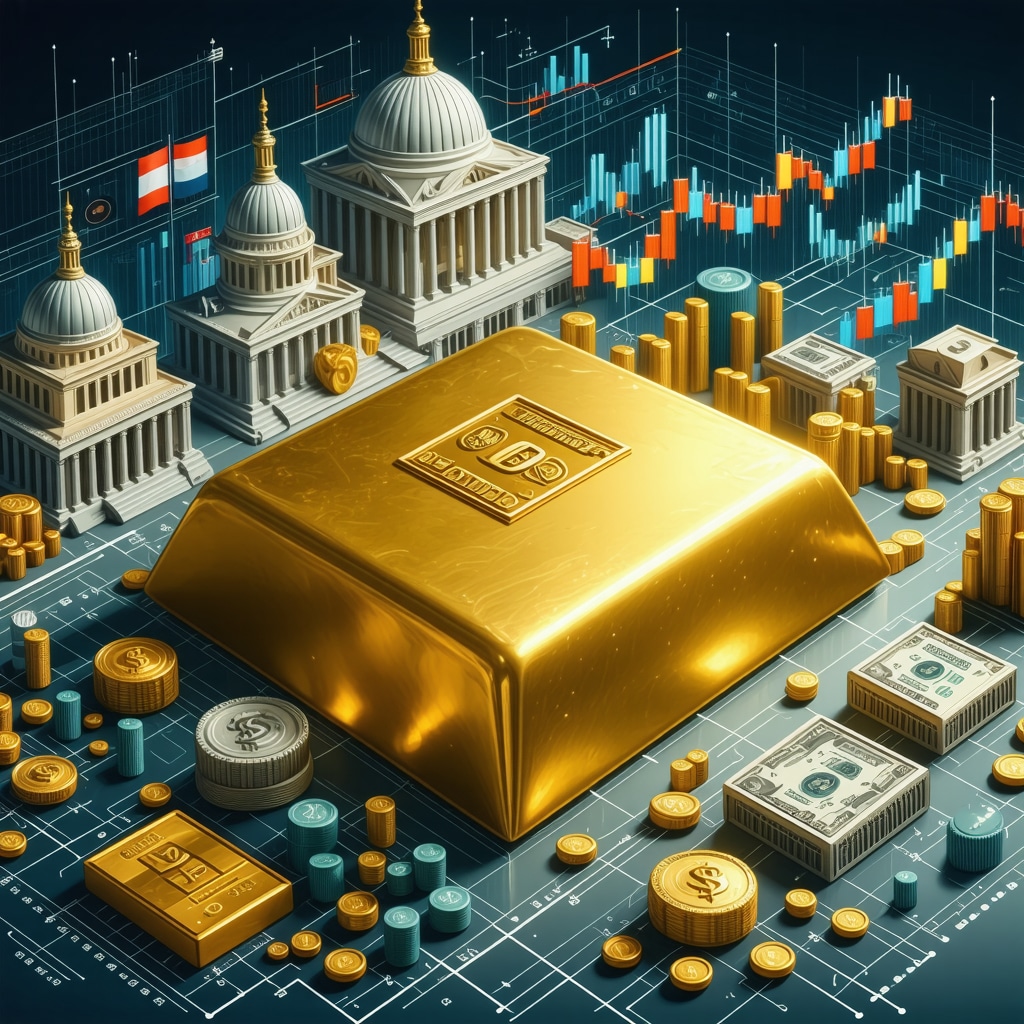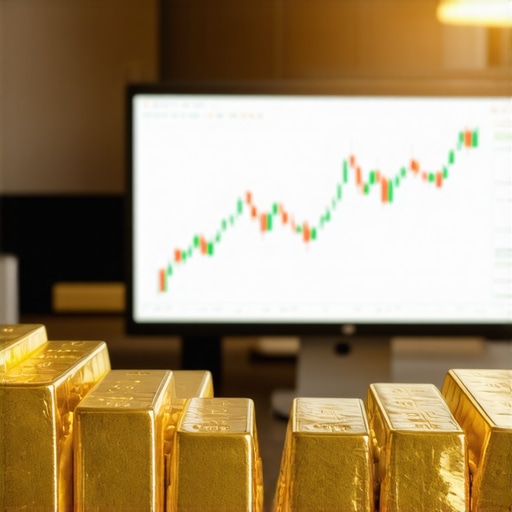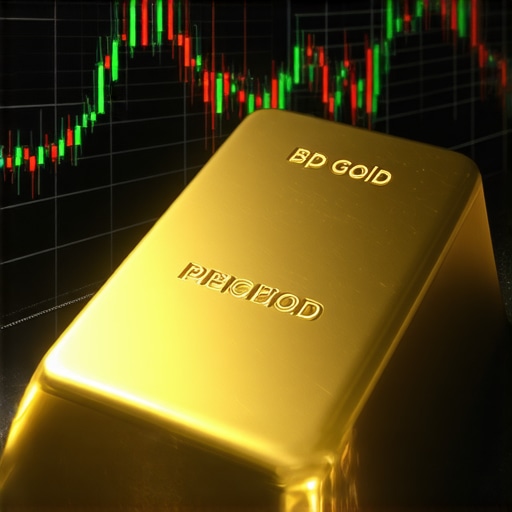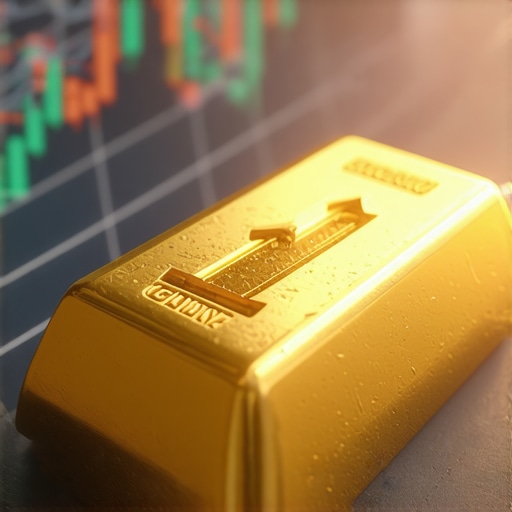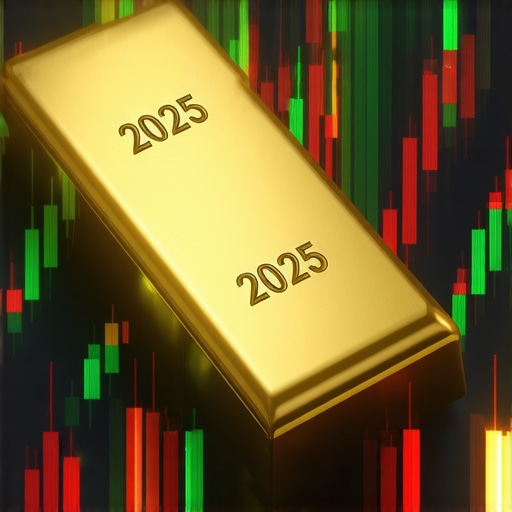Unraveling the Complex Dynamics of Gold Price Drivers in 2025
As we approach 2025, understanding the intricate web of factors influencing gold prices becomes imperative for investors, policymakers, and industry insiders. Gold, long regarded as a safe haven asset, is subject to a myriad of economic, political, and market-driven forces that collectively shape its trajectory. This article offers a comprehensive, expert-level analysis of the key drivers expected to impact gold prices in 2025, emphasizing the importance of a nuanced, multi-dimensional approach.
Economic Foundations: Inflation, Currency Fluctuations, and Global Growth
How Will Inflationary Pressures and Central Bank Policies Shape Gold Valuations?
In 2025, inflation remains a pivotal concern, with central banks balancing monetary tightening against economic growth. Elevated inflationary expectations tend to bolster gold demand as a hedge, but aggressive rate hikes can strengthen the US dollar, exerting downward pressure on gold prices. Analyzing recent trends in central bank gold purchases reveals a strategic shift that could influence global supply dynamics.
Political Stability and Geopolitical Risks: Surprising Catalysts
Can Political Turmoil Accelerate or Suppress Gold Price Trends in 2025?
Unforeseen geopolitical conflicts or political instability in major economies often trigger surges in gold prices, as investors seek refuge amidst uncertainty. The evolving landscape in regions such as Eastern Europe and Asia underscores the importance of geopolitical risk analysis. These factors intertwine with economic policies, creating oscillations in investor sentiment and market volatility.
Market Trends and Technological Innovations: The Role of Supply, Demand, and Digital Assets
What Are the Emerging Market Trends That Could Redefine Gold’s Investment Landscape?
Market trends in 2025 reflect a complex interplay between traditional demand drivers—such as jewelry and industrial usage—and innovative avenues like digital gold and blockchain-based assets. The supply side faces challenges from mining disruptions and environmental regulations, which can constrain availability and influence prices. For detailed insights, explore gold supply-demand analysis.
Expert Question: How Should Investors Integrate These Multi-Faceted Drivers into a Cohesive Strategy?
Investors must adopt a holistic approach, considering macroeconomic indicators, geopolitical developments, and emerging technological trends. Diversification across gold forms—such as physical bullion, ETFs, and mining stocks—can mitigate risks and capitalize on market opportunities. For tailored guidance, consult expert strategies for gold ETFs and mutual funds in 2025.
To deepen your understanding, reviewing authoritative sources like the World Gold Council’s reports can provide valuable context. As the landscape evolves, proactive engagement with market intelligence and strategic asset allocation remains essential.
For those seeking to contribute to this discourse, sharing insights on emerging trends or questions about specific geopolitical scenarios can foster a richer understanding of gold’s future trajectory.
Unveiling the Subtle Influences: How Global Economic Policies Shape Gold Prices in 2025
As we delve deeper into 2025, one cannot overlook the nuanced impact of international monetary policies and trade agreements on gold’s valuation. Central banks worldwide are adopting diverse strategies—some expanding their gold reserves to hedge against dollar weakness, others manipulating currency policies to stabilize national economies. These complex maneuvers directly influence gold demand and supply, creating a landscape where investor sensitivity to policy shifts becomes paramount. For a comprehensive understanding, explore how central bank actions influence gold prices and incorporate these insights into your strategic planning.
The Impact of Macroeconomic Policies on Gold’s Market Trajectory in 2025
As we venture deeper into 2025, the influence of macroeconomic policies—particularly fiscal stimulus measures and monetary easing—becomes increasingly apparent in shaping gold price movements. Countries adopting expansionary fiscal policies often stimulate economic growth but can also lead to inflationary pressures, thus elevating gold’s appeal as a hedge. Conversely, tightening monetary policies by major central banks, especially in response to inflation, can strengthen the dollar and exert downward pressure on gold prices. Understanding these dual forces requires a nuanced analysis of policy timing, geopolitical context, and market sentiment.
Deciphering the Role of Global Supply Chain Disruptions in Gold Availability
Supply chain disruptions, whether due to geopolitical tensions, environmental regulations, or unforeseen crises like pandemics, profoundly impact gold mining and refining operations. These disruptions can lead to scarcity in physical gold, influencing premiums and spot prices. Notably, recent reports from the World Gold Council highlight how logistical bottlenecks in key mining regions have temporarily constrained supply, amplifying market volatility. Investors should monitor these disruptions closely, as they often act as catalysts for short-term price surges or dips.
How Do Digital Gold and Blockchain Innovations Reshape Investment Strategies?
The emergence of digital gold platforms and blockchain-based assets introduces a new layer of complexity to gold investing. These innovations facilitate fractional ownership, enhance liquidity, and reduce transaction costs, making gold more accessible to a broader investor base. However, they also raise regulatory and security concerns, which can influence market perceptions of legitimacy and stability. According to a recent CryptoSlate report, the integration of digital assets with traditional gold markets could lead to increased price synchronization and new arbitrage opportunities, demanding sophisticated analytical tools for effective navigation.
Expert-Level Question: How Can Investors Quantify the Impact of Geopolitical Tensions on Short-Term Gold Price Volatility?
Quantifying the influence of geopolitical tensions involves integrating geopolitical risk indices, such as the Global Risk Institute’s geopolitical risk index, with real-time market data and sentiment analysis. Advanced econometric models—like vector autoregression (VAR) combined with machine learning techniques—can forecast volatility spikes by capturing the interplay between geopolitical events and financial markets. Developing a bespoke risk management framework that incorporates these models enables investors to better prepare for sudden market shifts, effectively balancing risk and opportunity.
To deepen your strategic insights, consider engaging with authoritative research from institutions like the World Gold Council and leveraging specialized analytical tools that synthesize geopolitical, economic, and technological data points. Staying ahead in the gold market requires continuous learning and adaptation to this multi-faceted environment.
Global Economic Policies and Their Subtle Yet Powerful Effects on Gold Pricing in 2025
The subtle influence of international economic policies extends beyond immediate market reactions, embedding themselves into long-term gold valuation trends. For example, the strategic accumulation of gold reserves by emerging markets, as a hedge against dollar depreciation, signals a shift in global monetary power dynamics. Additionally, trade policies and tariffs can indirectly affect gold prices by altering currency stability and inflation expectations. Analyzing these policies through a layered approach—combining macroeconomic models with geopolitical analysis—provides a comprehensive understanding of future price trajectories. For authoritative insights, review detailed reports from the IMF World Economic Outlook and the World Gold Council’s research publications.
Exploring the Impact of International Monetary Policies on Gold Valuations in 2025
In 2025, the nuanced effects of global monetary strategies continue to shape gold’s market performance. Central banks adopting unconventional policies, such as quantitative easing or targeted reserve expansions, influence liquidity and inflation expectations, thereby affecting gold demand. According to a detailed analysis by the IMF World Economic Outlook, these policies can create long-term inflation hedging opportunities, requiring investors to adapt their strategies accordingly.
Advanced Risk Management: Integrating Geopolitical and Economic Indicators
How Can Sophisticated Models Quantify Short-Term Gold Price Volatility Due to Geopolitical Events?
Utilizing econometric models like vector autoregression (VAR) combined with machine learning algorithms enables analysts to forecast volatility spikes driven by geopolitical tensions. By integrating geopolitical risk indices, such as the Global Risk Institute’s geopolitical risk index, with real-time market data, investors can develop predictive frameworks that enhance risk mitigation. This approach underscores the importance of combining quantitative analysis with geopolitical intelligence for dynamic portfolio management.
Innovations in Digital Gold and Blockchain: Navigating Regulatory and Market Impacts
The rapid integration of blockchain technology into gold investment vehicles introduces unprecedented liquidity and fractional ownership options. However, regulatory uncertainties, especially concerning security and custody, can influence market confidence. According to a CryptoSlate report, these digital assets may synchronize with physical gold prices, creating arbitrage opportunities but also necessitating sophisticated analytical tools for effective strategy development.
How Can Investors Leverage Supply Chain Disruptions for Strategic Advantage?
Current disruptions in mining and refining operations, exacerbated by geopolitical conflicts and environmental regulations, have led to short-term scarcity and price volatility. Monitoring reports from the World Gold Council indicates that logistical bottlenecks can serve as catalysts for market swings. Strategic positioning ahead of these disruptions—through inventory management or futures contracts—can optimize returns and hedge against unforeseen shocks.
Engage with Expert Strategies: Aligning Multi-Faceted Drivers for Optimal Gold Investment
Developing a comprehensive investment approach requires synthesizing macroeconomic trends, geopolitical developments, technological innovations, and supply chain insights. Diversification across physical bullion, ETFs, and mining stocks remains vital. For tailored guidance, explore expert strategies for gold ETFs and mutual funds in 2025. Staying informed through authoritative sources like the World Gold Council enhances decision-making precision and market agility.
Expert Insights & Advanced Considerations
Market Diversification Remains Crucial
In 2025, integrating various gold investment vehicles such as physical bullion, ETFs, and mining stocks can hedge against market volatility and capitalize on emerging trends.
Geopolitical Intelligence Enhances Risk Management
Employ advanced geopolitical risk indices and econometric models to forecast short-term volatility, enabling proactive portfolio adjustments amid global tensions.
Technological Innovations Are Reshaping Accessibility
Blockchain and digital gold platforms introduce fractional ownership and liquidity, but require rigorous analysis of regulatory developments to optimize investment strategies.
Supply Chain Resilience Is Key
Monitoring and strategically positioning around disruptions in mining and refining can provide short-term gains and long-term stability in physical gold holdings.
Policy Shifts Demand Continuous Learning
Deep engagement with authoritative sources like the World Gold Council and IMF reports is essential for understanding evolving macroeconomic and monetary policies impacting gold prices.






